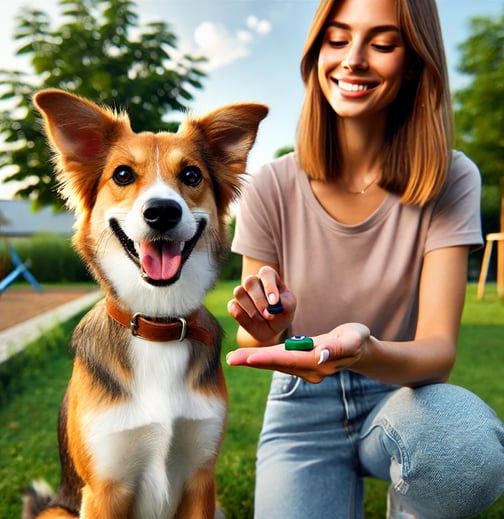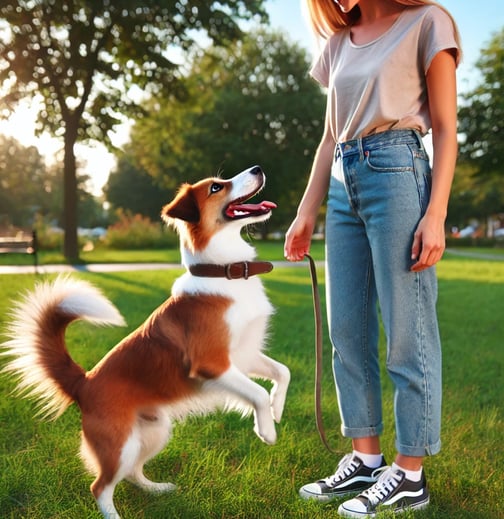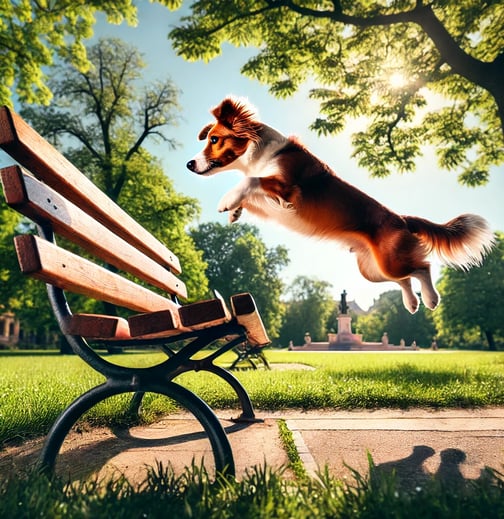Alpha Roll: Rolling Your Dog to Show Who's Boss
The Alpha Roll. Learn what it is. Why You should or NEVER should do it. Is there better options?
7 min read
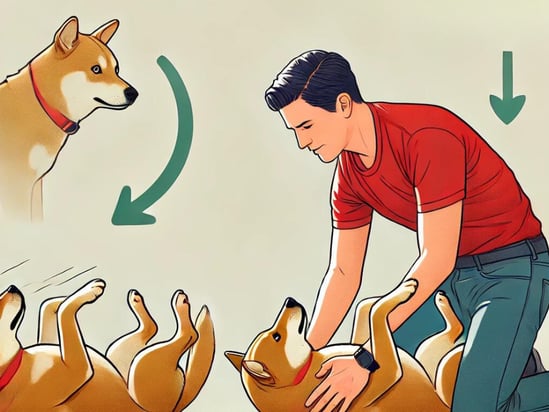

Hidden Secrets to Perfect Dog Training
A Quick question...
Are you struggling with your dog’s behavior? Do you find yourself frustrated and unsure of what to do next?
You're not alone! Many dog owners face these challenges every day. But what if I told you there’s a secret method that can transform your dog into a well-behaved, happy companion?
But first...
Let's talk about the famous and controversial Alpha Roll...
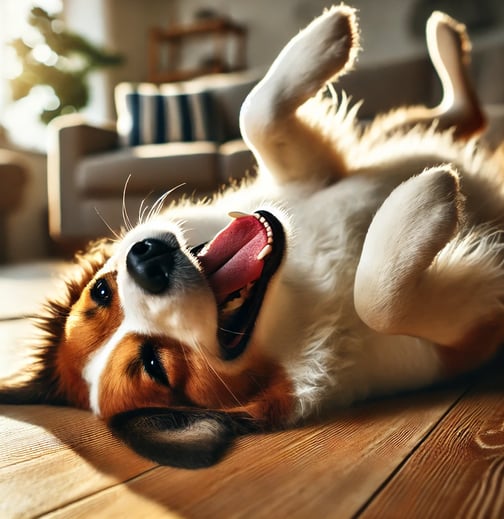

Alpha Roll: Rolling Your Dog to Show Who's Boss
Ever heard of the alpha roll? It means rolling your dog on its back. Some folks do it to show who's in charge. This idea gets people talking.
Why Are Some Using The Alpha Roll?
Some think it shows who's boss. They believe their dog will respect them more. Others use it to fix bad behavior. They think it teaches the dog a lesson.
Why Alpha Roll is Bad
This can scare your dog. It makes them stressed or anxious. It breaks trust. Your dog might get aggressive or afraid. Many trainers say don’t do it. Modern training uses kind methods instead.
David Mech, a top wolf researcher, said the idea of "alpha" wolves doesn’t fit wild wolf packs. This weakens the alpha roll idea (source).
The American Veterinary Society of Animal Behavior (AVSAB) questions the science behind dominance-based training like the alpha roll (source).
A 2009 study by the University of Bristol found that dominance methods, like the alpha roll, made dogs with no aggression history act more aggressive (source).
The Monks of New Skete, who first made the alpha roll popular in 1978, now discourage it. In their 2002 book, they called it "too risky and demanding for the average dog owner" (source).
Patricia McConnell, an expert in animal behavior, wrote about the harm and misunderstanding of dominance in dogs caused by techniques like the alpha roll (source).
Modern animal behaviorists and trainers say the alpha roll can cause physical harm, create fear and stress, damage the human-dog bond, and may increase aggression (source).
The alpha roll is based on misinterpreted studies of captive wolves in unnatural groups. This doesn’t match wild wolf behavior or how domestic dogs act (source, source).
Better Ways to Train Your Dog
Use Treats and Praise
Reward good behavior. Your dog will do it again. For example, if your dog sits when you ask, give them a treat right away. Say, "Good job!" and give a pat on the head. Your dog will connect the treat with sitting and will want to do it more.
Stick to Rules
Set clear rules. Dogs love routines. For instance, always have your dog sit before meals. Make them wait until you say, "Okay," to eat. This teaches patience and manners. Stick to this rule every day. Your dog will know what to expect and feel secure.
Stay Calm
Use a firm voice. Yelling confuses your dog. Imagine your dog jumps on the couch. Instead of yelling, say, "Off," in a calm, firm voice. Gently guide them off if needed. They’ll learn what "Off" means without getting scared.
Be a Confident Leader
Show confidence. Don’t use force. Dogs respect calm leaders. When walking your dog, hold the leash firmly but gently. Walk with purpose. If your dog pulls, stop and wait until they calm down. Then start walking again. This shows you’re in control without being harsh.
Train Every Day
Keep training short and fun. Daily practice works best. Spend just 10 minutes a day on training. Play fetch and practice commands like "Sit" and "Stay." Use treats and praise to keep it positive. Your dog will learn better in short, fun sessions.
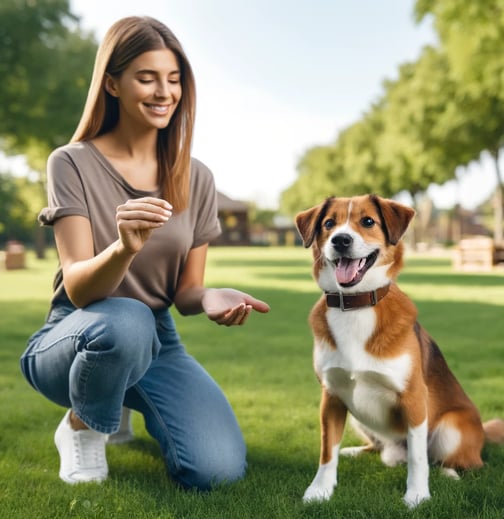

Why Would You Want To Avoid Alpha Roll
It's much better to build trust with your dog using kinder methods. Your dog feels safe. Training gets easier. Positive methods last longer. You’ll enjoy training more.
Tips for Positive Training
Be patient. Give your dog time to learn. Each dog learns at its own pace. Lead with love and respect. Dogs respond well to kindness. Keep rules clear and steady. Praise good behavior often. Make training fun with games.
Understand Your Dog
Learn to Read Your Dog’s Body Language
Dogs talk through actions. It helps you understand how they feel.
Example 1: Tail Position If your dog’s tail is wagging high, they’re happy and excited. If it’s low and between their legs, they’re scared or anxious. Let’s say you’re at the park. Your dog sees another dog and its tail wags high and fast. This means they’re eager to meet and play.
Example 2: Ears and Eyes Look at their ears and eyes. If their ears are perked up and eyes are wide, they’re alert and interested. If ears are flat and eyes are squinty, they’re nervous or unsure. Imagine you bring a new toy home. Your dog’s ears perk up, and their eyes get big. They’re curious and ready to check it out.
Example 3: Body Posture Notice their stance. A relaxed dog will have a loose, wiggly body. A tense dog might have a stiff body and legs. Picture your dog meeting a new person. If they’re loose and wiggly, they feel safe. If they’re stiff, give them space to adjust.
Pay Attention
Observe your dog in different situations. You’ll start to see patterns.
Example 1: Greeting People When someone new comes over, watch how your dog reacts. If they wag their tail and approach with a relaxed body, they’re friendly. If they back away or bark, they might be scared or protective. Respect their signals.
Example 2: Eating and Playing During meals or playtime, notice if your dog seems calm and happy. A relaxed dog will eat or play with joy. If they seem tense or stop eating, something might be wrong.
Socialize Your Dog
Expose your dog to different places and people. This helps them become well-rounded and confident.
Example 1: Walks in Different Parks Take your dog to various parks. They’ll get used to new smells, sights, and sounds. This builds their confidence. A confident dog will explore with a wagging tail and relaxed body.
Example 2: Meeting New Dogs Arrange playdates with other dogs. Watch how your dog interacts. A well-socialized dog will play nicely, take breaks, and respect other dogs’ signals.
Keep Their Mind Busy
Engage your dog with puzzles and training games. Mental exercise is just as important as physical exercise.
Example 1: Puzzle Toys Use puzzle toys to hide treats. Your dog will have fun figuring out how to get the treats. This keeps their mind sharp and prevents boredom.
Example 2: Training Games Play games like hide and seek. Hide treats around the house and let your dog find them. This game is fun and stimulates their brain.
Understanding your dog’s body language makes a huge difference. You’ll know what they need and how they feel. This builds a stronger bond between you and your furry friend.
Do This Instead - Build a Trusting Relationship
Forget the alpha roll. Use positive methods. Build trust and respect. Enjoy a happier bond. Focus on kindness. Make training fun and effective. Your dog will thank you.
In my Dog Training Secrets Ebook, you’ll uncover the hidden techniques that top trainers use. Imagine having a dog that listens to your every command, one that respects you without fear or aggression. Sounds too good to be true, right? But it’s possible!
You Are Missing This Inside the Ebook:
The power of positive reinforcement: See how treats and praise can change your dog’s behavior for the better.
The magic of consistency: Understand why clear rules and routines make your dog feel secure.
Calm and confident leadership: Find out how staying calm and showing confidence without force can earn your dog’s respect.
Daily fun training tips: Keep your training sessions short and enjoyable to make learning a blast for your dog.
Reading your dog’s body language: Learn to understand what your dog is telling you through their actions.
All these secrets and more are packed into my ebook. You’ll not only solve your dog’s behavior problems but also build a stronger, more loving bond with them.
Don’t miss out on these invaluable tips that can make all the difference.
Ready to transform your dog’s behavior? Click here to get your copy of the Dog Training Secrets Ebook now!
Don't Miss Out Get "Dog Training Secrets"
Today - Click Book Cover Below!
Contact
Follow
© DogsAndTips.com - 2024 → ∞

